My 7 year old son attends a STEM workshop at our local library. His challenge was to support a book using only paper. My challenge is implementing this concept into my art room.
It’s been a busy month in the art room and I look at how long it has been since my last post. YIKES! It is certainly NOT due to laziness. November has been filled with budget deadlines, professional development, parent/teacher conferences, end of marking period responsibilities such as grades and report cards and of course, we have been working hard on our art projects.
On top of all of these normal “teacher things”, I have been diligently researching ways to implement a STEAM program into our art curriculum.
STEAM. Science. Technology. Engineering. ART. Math. Some prefer “STEM” and leaving out the “Art”, but naturally that doesn’t jive with my teaching philosophy. For the past two years, I have been exploring the concept of putting art into STEM.
To some, STEM/STEAM is just another one of the latest “buzzwords” in education. Some may compare it to “discipline based learning” where you align “specials” with a “core subject”. Some recognize that students need more science, math and technology to keep up with competition in other countries and be able to contribute to future society. Thus, STEM (or STEAM) has evolved into the education world.
HOW DO I GET STARTED?
1. RESEARCH.
Education Closet, http://educationcloset.com/steam/what-is-steam/, has an excellent description of STEAM, as well as many resources for teachers. Another great site with STEAM information can also be found at Edutopia, https://www.edutopia.org/stem-to-steam-resources.
Some of the resonating elements of STEM/STEAM to me focuses on exploration, experimentation and problem solving. These are all a natural fit to the arts. However, when developing a strong STEAM program, one must align lessons with the standards of science, technology and math.
I recently hosted a professional development day for my K-8 art department that discussed how to develop lessons that align with the STEM curriculum. Collaboration with other teachers would certainly help with this curricular component, however having common planning time is often a challenge. Fortunately, there are different levels of STEAM implementation and for myself, I intend to align a few lessons throughout the school year with science, technology and math standards.
2. PLAY.
One of the great things about STEAM is learning through “play”. The idea that I intend to focus on in the art room is that students can discover and create through play. What they develop might not look “pretty” or fit into a traditional “art project”, but students are testing, experimenting and creating through play. Creating opportunities to invoke a “creative spirit” is important.
The K-8 Art Teachers participated in “challenges” that align with ENGINEERING as part of a professional development on STEAM. The goal was to learn how to implement STEAM into the K-8 art room.
3. ACCEPT FAILURE.
Most students do not want to fail. Adults don’t like to fail. However, accepting failure as part of the learning process allows for growth. In a STEAM environment, students are encouraged to take risks. Students will experiment and see what works and what does not. Perhaps the lego tower will fall over if it doesn’t have a strong base support. Maybe certain folds and creases to paper will support a tennis ball or book better than a tube system. How do you know what will work until you try and fail? These “failures” really lead to success. Celebrate these moments!
4. “THE FAB LAB” and “STEAM CHALLENGES”.
Aligning my entire art curriculum to a STEAM driven program is overwhelming, so I am creating ways to implement elements into the art program that seem to be a natural fit. For example, as students work on studio projects, they all work at a different pace. To avoid students that have “nothing to do”, I am developing multiple “bonus projects”, “STEAM Challenges” and technology assignments that support my curriculum, as well as aligning with STEAM.
To start with, I am creating a “Makerspace”, which my smART partner and I have decided to refer to as our “Fab Lab”. This will be a space that has materials available to students, with “Challenge Cards”, for students to complete. The challenges are derived from engineering concepts and will use a variety of materials such as legos, K’Nex, cardboard, paper, etc. These materials will rotate on a monthly basis. As students complete a “challenge”, they will get a signature on their “Fab Lab Card”. The number of completed challenges will correspond to levels on a posted “Leaderboard”, which will be in our art hallway. As students complete their challenges, their names will go on the leaderboard. There will then be a monthly drawing from our top “Engineers”.
While many components will change as I learn through my students and get valuable feedback from their own experiences, I am excited to have some STEAM goals to work towards. I intend to document the progress of the “Fab Lab” and STEAM initiative in my blog posts throughout the school year.
I hope you continue to follow my art classes on this exciting journey!
-Mrs. S

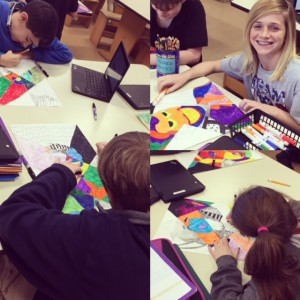
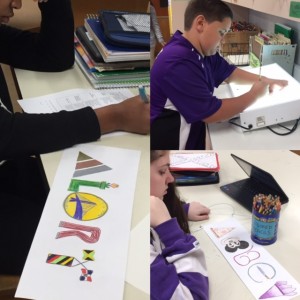
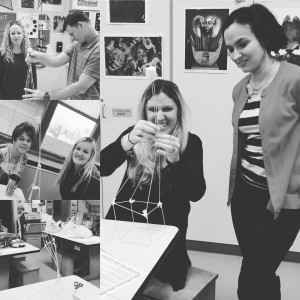
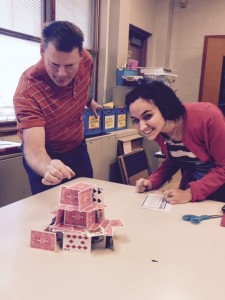
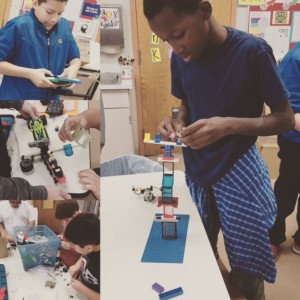
I like how tall the tower is.